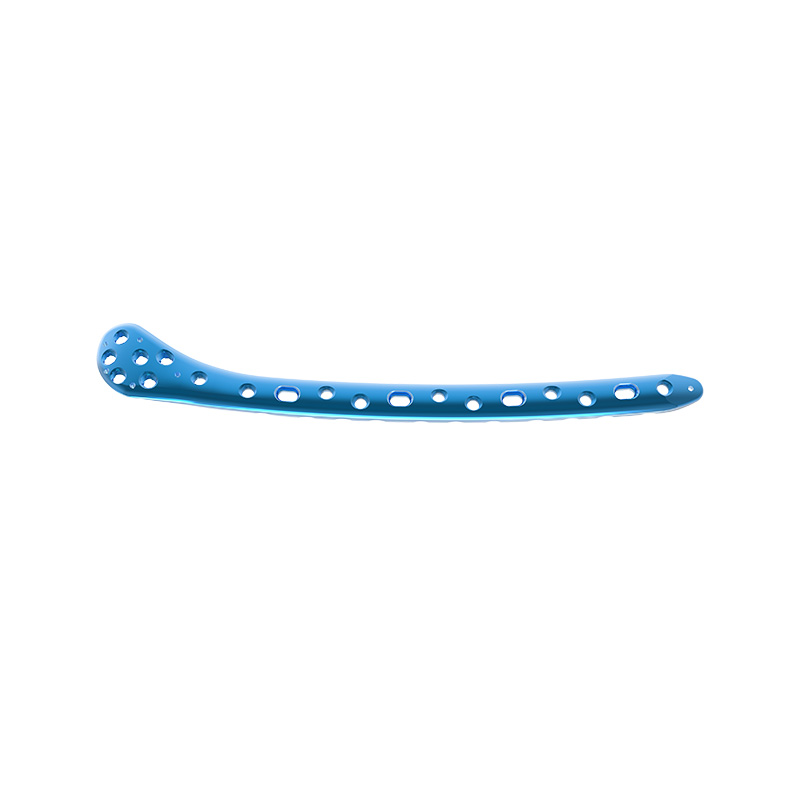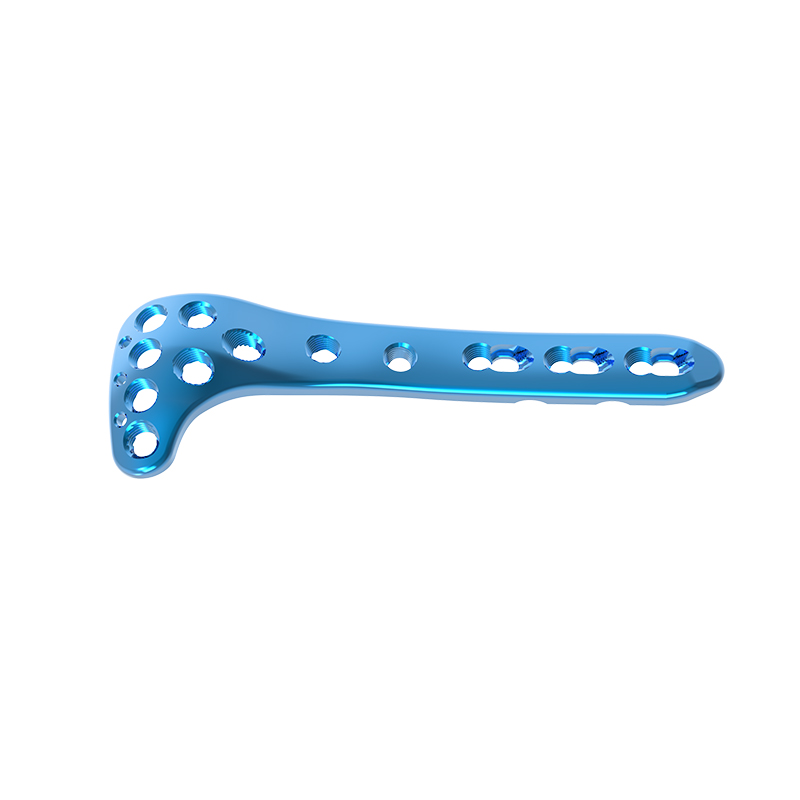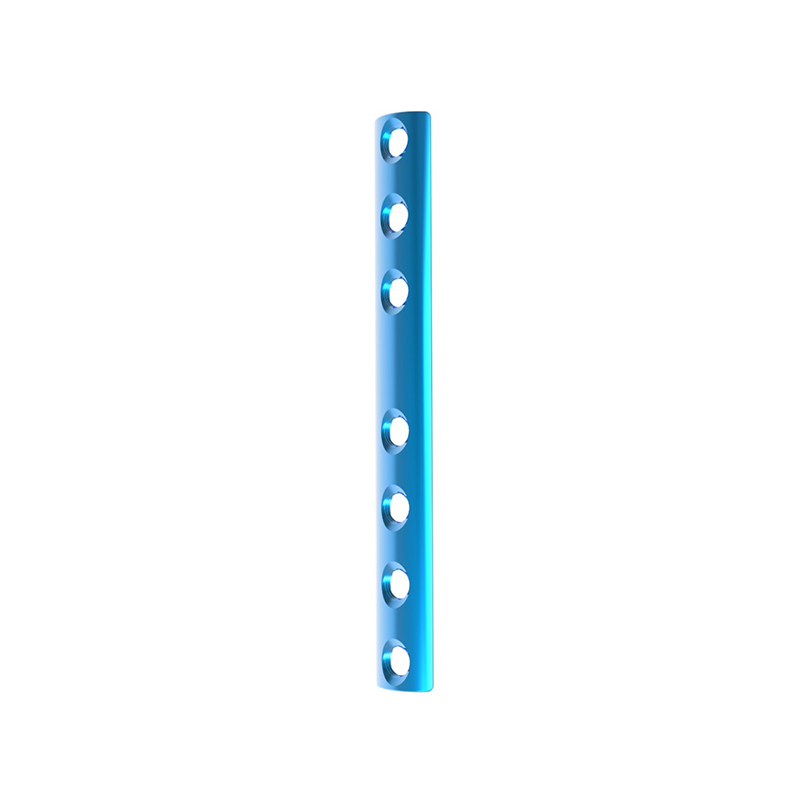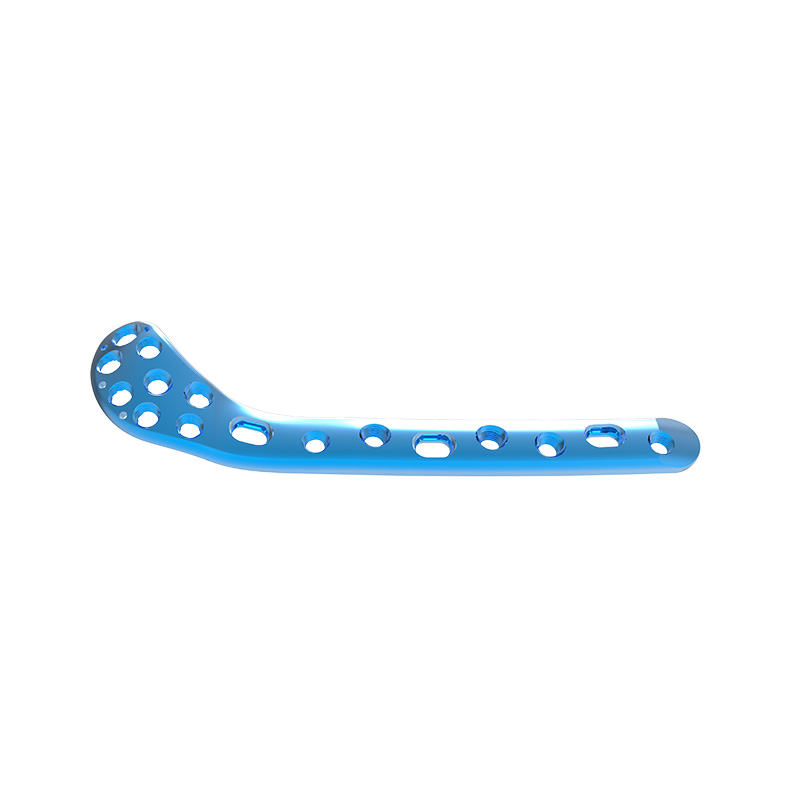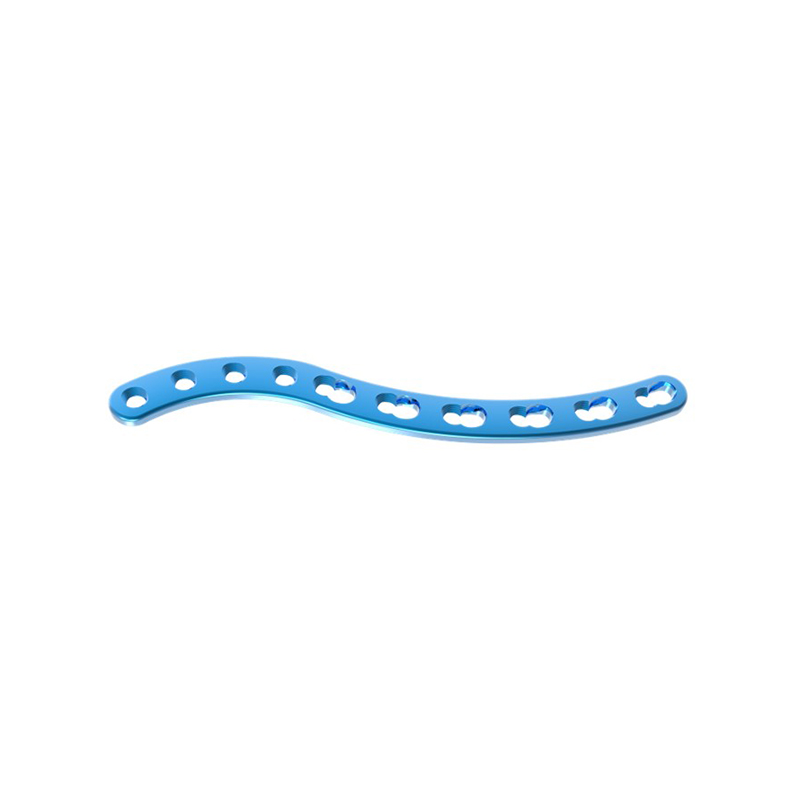Distal Lateral Femur Locking Compression Plate I
LCP Distal Plate Features
1.Tapered, rounded plate tip facilities a minimally invasive surgical technique
2.The anatomical shape of the head of the plate matches the shape of the distal femur.

3.The long slots allow bi-directional compression.
4.Thick-to-thin plate profiles make the plates autocontourable.

Distal Femur Plate Indications
Indicated for temporary internal fixation and stabilization of osteotomies and fractures, including:
Comminuted fractures
Supracondylar fractures
Intra-articular and extra-articular condylar fractures
Fractures in osteopenic bone
Nonunions
Malunions
Femur Plate Details
| Distal Lateral Femur Locking Compression Plate I | 6 holes x 179mm (Left) |
| 8 holes x 211mm (Left) | |
| 9 holes x 231mm (Left) | |
| 10 holes x 247mm (Left) | |
| 12 holes x 283mm (Left) | |
| 13 holes x 299mm (Left) | |
| 6 holes x 179mm (Right) | |
| 8 holes x 211mm (Right) | |
| 9 holes x 231mm (Right) | |
| 10 holes x 247mm (Right) | |
| 12 holes x 283mm (Right) | |
| 13 holes x 299mm (Right) | |
| Width | 18.0mm |
| Thickness | 5.5mm |
| Matching Screw | 5.0 Locking Screw / 4.5 Cortical Screw / 6.5 Cancellous Screw |
| Material | Titanium |
| Surface Treatment | Micro-arc Oxidation |
| Qualification | CE/ISO13485/NMPA |
| Package | Sterile Packaging 1pcs/package |
| MOQ | 1 Pcs |
| Supply Ability | 1000+Pieces per Month |
The Distal Lateral Femur Locking Compression Plate (LCP) operation involves the surgical placement of the plate to stabilize and repair fractures or other injuries in the distal femur (thigh bone). Here's a general overview of the procedure:Preoperative preparation: Before the surgery, you will undergo a thorough evaluation, including imaging tests (such as X-rays or CT scans) to determine the extent of the fracture. You'll also receive preoperative instructions regarding fasting, medications, and any necessary preparations.Anesthesia: The surgery is typically performed under general anesthesia, which means you'll be unconscious and pain-free throughout the procedure. Your anesthesiologist will discuss the anesthesia options with you based on your medical history and specific needs.Incision: The surgeon will make an incision over the distal femur to expose the fractured bone and surrounding tissues. The size and location of the incision may vary based on the fracture pattern and the planned surgical approach.Reduction and fixation: Next, the surgeon will carefully align the fractured bone fragments, a process called reduction. Once the alignment is achieved, the Distal Lateral Femur LCP will be secured to the bone using screws. The screws will be inserted through the holes in the plate and anchored into the bone.Closure: After the plate and screws are in position, the surgeon will perform a thorough examination of the surgical site to ensure proper alignment and stability. Any remaining soft tissue layers and the skin incision will then be closed using surgical sutures or staples.Postoperative care: After the operation, you will be taken to the recovery room and closely monitored. You may be given pain medications to manage any discomfort. Physical therapy may be initiated shortly after surgery to promote healing and restore function. Your surgeon will provide specific postoperative care instructions, including recommendations for weight-bearing restrictions, wound care, and follow-up appointments.It's important to note that the above description provides a general overview of the procedure, and the actual process may vary based on individual circumstances and the surgeon's preference. Your orthopedic surgeon will explain the specific details of your operation and address any concerns or questions you may have.

